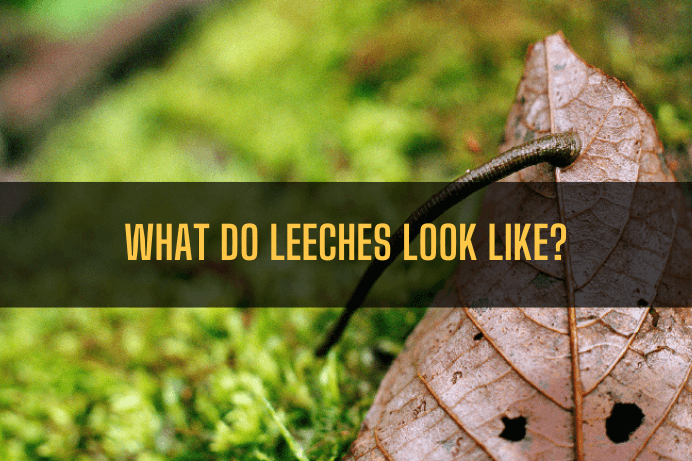What do leeches look like?
We’ll talk about leech physical characteristics today so you can recognize them everywhere you encounter them.
Leeches are parasitic worms with metamerically segmented bodies. They have unjointed appendages since they are annelids. The presence of anterior and posterior suckers is a distinguishing characteristic of leeches.
Using a labelled graphic, let’s examine the leech’s (Hirudinaria granulosa) description.
- The body of leeches is soft, elongated, and dorso-ventrally flattened, and it is around 30-35 cm long.
- 33 segments, or somites, make up their 33-segmented body. Further divisions into annuli or rings are made for each segment.
- Six areas make up their body: the cephalic region (1–5 segments), the pre–clitellar (6–8), the clitellar (9–11), the middle (12–22), the caudal (23-26), and the posterior sucker (27–33).
- There are five sets of eyes in the dorsal five segments.
- Three pairs of segmental receptor organs are on the ventral side, and four are on the dorsal side.
- Additionally, their anterior and posterior suckers are fully grown.
- The circular posterior sucker has a muscular disc in the back. This sucker functions as a locomotor and adhesion organ.
- Hermaphrodites are leeches. The second and third annuli of the 10th segment include the male genital opening, located mid-ventrally. Between the second and third annuli of the eleventh segment is where the female vaginal opening is located.
- The testis sacs, vas efferent, vas deferens, epididymis, ejaculatory ducts, and genital atrium are among the male organs. The ovaries, oviducts, and vagina are among the female organs. It is common to reproduce sexually.
Significance of Leeches
Leeches are parasites that consume both human and animal blood as food. To stop blood from clotting, leeches release anticoagulant proteins like hirudin. They were once employed to take blood from patients to lower fluid pressure.
Growth of Leeches
Leeches deposit their eggs in cocoons, and when they hatch, the young look like little adults. As they become more extensive, they stay the same.
In environments that freeze or dry out for a portion of the year, leeches burrow themselves in mud and remain dormant until the environmental conditions improve.
Temperature and food availability have a significant impact on leech growth rate. Most species can reach maturity in optimal conditions in a few weeks or months.
Life cycle
Although many leeches can survive for several years, some finish their life cycle in a few months.
Behaviours
Leeches can all crawl, and some of them are skilled swimmers. They look for prey by tracing the scent or feeling of the target animals. They lengthen their bodies and become quite motionless when they first notice food, perhaps to sense their prey thoroughly.
Verdict
The majority of leech species are not in jeopardy of going extinct. Only one species has received legal protection, the therapeutic leech Hirudo medicinalis. This species was widespread throughout Europe and western Asia, but due to extensive collection for both study and medicinal purposes, it is now extinct in most of its native habitat. It is rated as “Lower Risk” by the IUCN and is included in Appendix II of the CITES Treaty.

